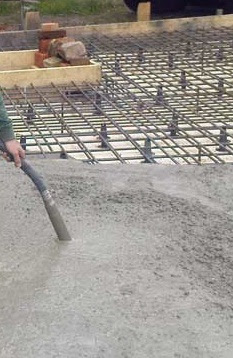In the previous post we have discussed about different types of vibrator, vibration techniques for different concrete member and also about over vibration. In this blog we will try to provide every information about concreting process. In this post we will learn how spacing of insertion of vibrator is fixed.
There have not many requirements for vibrator head insertion. But to explain this we have to learn about action range of vibrator. Action range of vibrator can be predicted for a vibrator operation by noticing following things:
a. Raised air bubbles around vibrating head
b. Observing a shining thin film formed around vibrator head.
The action range of vibration depends on the
1. Vibrator type
2. Composition of concrete
3. Concrete workability
Our aim is to provide efficient vibration to expel entrapped air to form a compact mass of concrete. For this purpose, the vibrator insertion point should be spaced such that action range is overlapped to some extent.
In case of workability of concrete having compaction factor of 0.78 to 0.85, the vibrating head is inserted typically (35-90) cm apart. The spacing that is fixed from above considerations is applied uniformly in entire concrete surface to have a uniformly vibrated concrete.

Thanks for sharing information. Concrete vibrator is a construction tool used on concrete pouring sites. A concrete vibrator is used to ensure that a concrete pour is even and free of air bubbles so that the concrete will remain strong and have a smooth finish.
ReplyDeleteThis comment has been removed by a blog administrator.
ReplyDelete